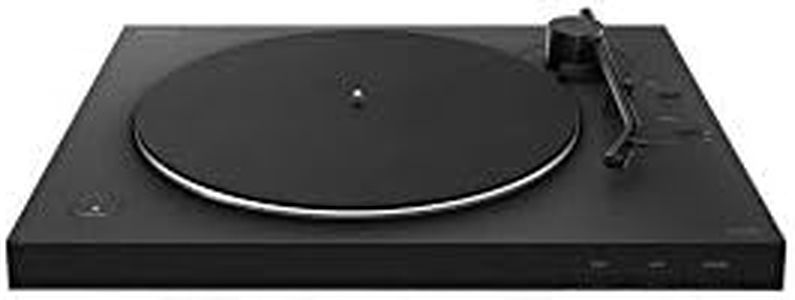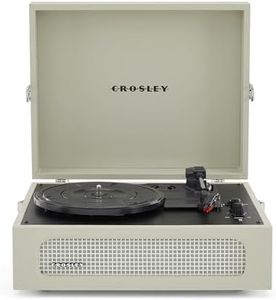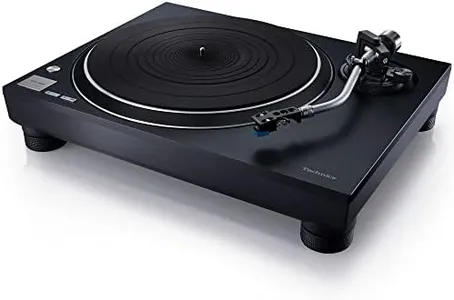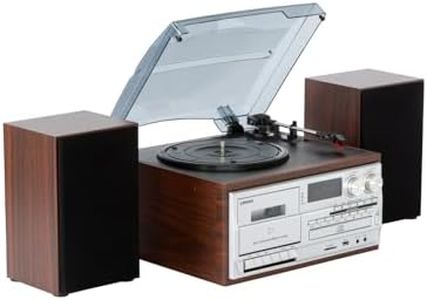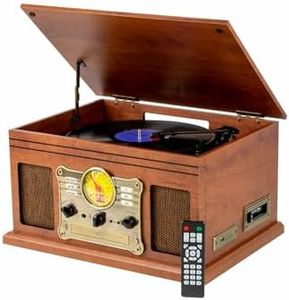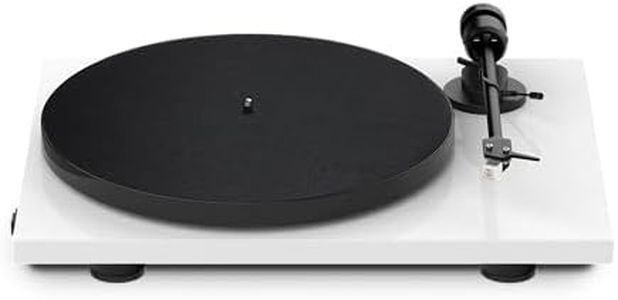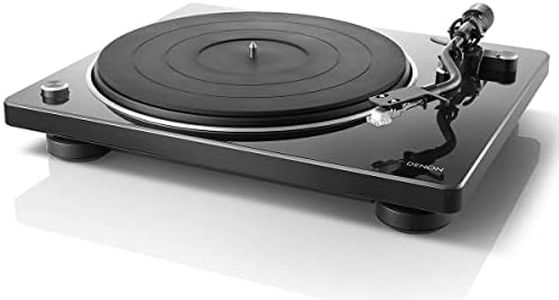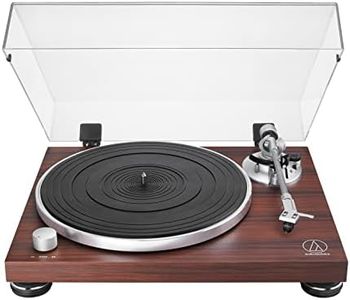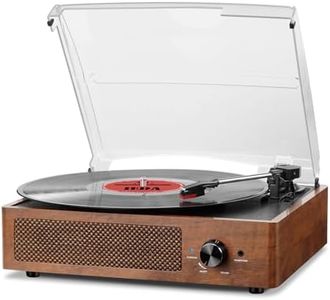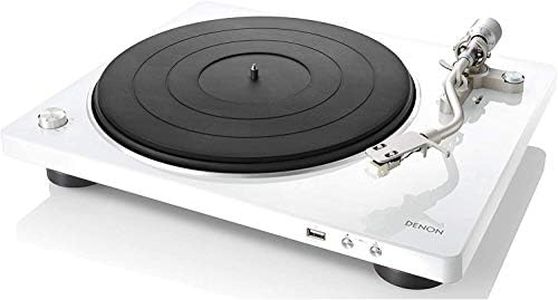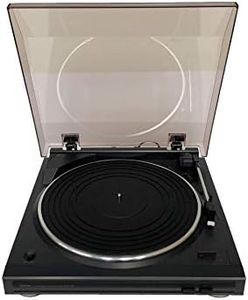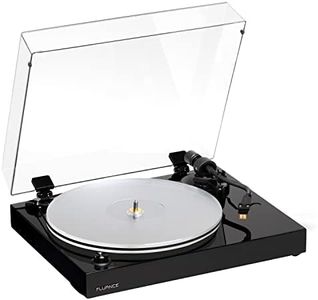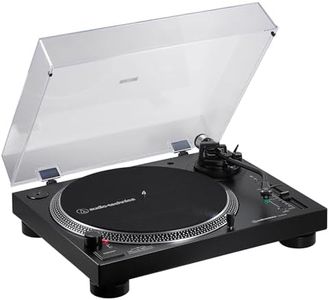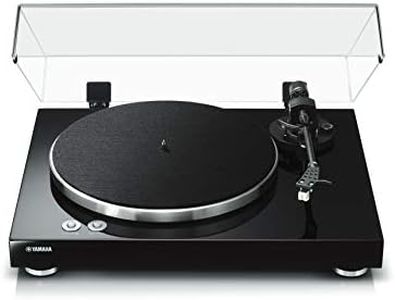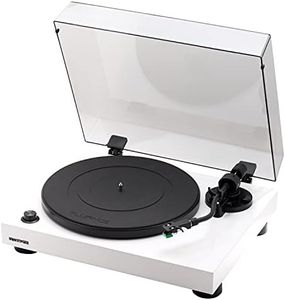We Use CookiesWe use cookies to enhance the security, performance,
functionality and for analytical and promotional activities. By continuing to browse this site you
are agreeing to our privacy policy
10 Best 3 Speed Turntables
From leading brands and best sellers available on the web.Buying Guide for the Best 3 Speed Turntables
When you're looking to buy a 3-speed turntable, you're choosing a device that can play records at three different standard speeds: 33 1/3, 45, and 78 revolutions per minute (RPM). This versatility means you can enjoy a broad collection of vinyl records, from classic LPs to older shellac discs. Before buying, think carefully about what you'll be playing, how you want to connect your turntable, and how hands-on you want to be with the operation. Focus on the main features that affect the turntable’s compatibility with your records, the quality of your audio experience, and the convenience of use.Speed Selection (33 1/3, 45, 78 RPM)This feature refers to the turntable’s ability to rotate the platter at three specific speeds. Each speed matches a certain type of record: 33 1/3 RPM for modern LPs, 45 RPM for singles or EPs, and 78 RPM for older shellac records. The more speeds available, the wider the range of records you can play. If you plan on listening mainly to modern albums and some singles, two speeds (33 1/3 and 45) are sufficient, but if you collect or inherit older 78 RPM records, a true 3-speed turntable is essential. Check if you actually own or plan to buy records in each format; choose a 3-speed model if you want the most flexibility.
Drive Type (Belt Drive vs. Direct Drive)Drive type indicates how the turntable's platter is spun—either with a belt (belt drive) or directly by the motor (direct drive). Belt drives are usually quieter and absorb motor vibrations, leading to better sound for regular listening, while direct drives have stronger torque and are preferred by DJs for quick start/stop and reverse playback. If you're a casual listener and want simplicity and sound quality, a belt drive is likely best. If you plan to experiment with mixing, scratching, or want something robust, direct drive might suit you more.
Cartridge and Stylus CompatibilityThe cartridge holds the stylus (needle) that reads your record grooves. Some turntables come with a pre-installed cartridge, while others let you upgrade or change it. This matters for sound quality and for playing 78 RPM records, which usually need a special stylus. If you want the most straightforward experience, look for a turntable with a good factory-installed cartridge that can handle your records. If you plan on optimizing your audio or playing a lot of 78 RPM discs, make sure the stylus can be swapped for a compatible one.
Built-in PreampA preamp boosts the turntable's signal to a level your speakers or audio system can use. Some newer turntables have a preamp built in, making them easy to plug directly into powered speakers or any audio system. If your sound system already has a phono input, you might not need this feature. Choose a built-in preamp for hassle-free setup, but if you already have a high-quality external preamp or phono input, you may not need this.
Manual vs. Automatic OperationManual turntables require you to move the tonearm and place the stylus onto the record yourself, and lift it off at the end. Automatic (or semi-automatic) models can handle some or all of this for you, which is convenient and reduces the risk of scratching your records. If you want more involvement or have a specific listening ritual, manual might be appealing. If you want ease and safety, especially if new to vinyl, an automatic or semi-automatic design is useful.
Connectivity Options (Analog, USB, Bluetooth)Connectivity refers to how you attach your turntable to speakers or other devices. Some turntables offer only traditional analog outputs, while others include USB for digitizing your records or Bluetooth to stream wirelessly. If you only plan to listen through a regular stereo, analog outputs are fine. If you want to convert your vinyl to digital files or use wireless speakers, look for a model with USB or Bluetooth options.
